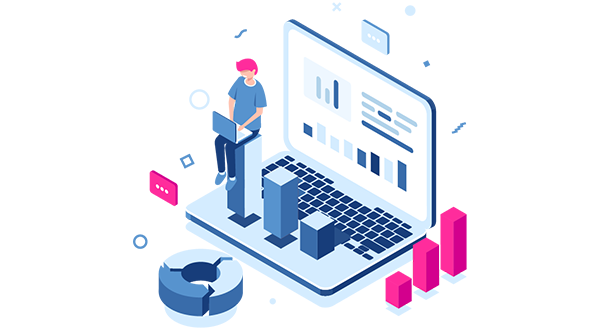

Mainframe Modernization: Risks, Challenges and Benefits

For decades mainframes have been the backbone of corporate and public sector IT systems, workhorses with unmatched capacity to manage the hyperscale workloads and high-volume transactions processed by large enterprises on a daily basis. Introduced in the 1950s, mainframes peaked in popularity during the 1960s and 70s. However, in recent years they’ve lost ground due to their high management and support costs, incompatibility with modern IT solutions and applications, and the shrinking, therefore increasingly expensive, mainframe languages support labor market.
The pandemic’s impact on business the past few years has further exposed the limitations of mainframe systems in terms of agility, cost efficiencies and critically-needed scalability. A mainframe’s monolithic architecture doesn’t fit into today’s agile, application-based, integration-driven IT environment, which means large organizations with huge, demanding customer bases are forced to constantly play catch-up when it comes to providing solutions those customers require. In other words, when it comes to long-term business sustainability, mainframes just don’t cut it.
What’s the solution? The answer is mainframe modernization.
Mainframe migration to the cloud offers expanded capabilities with reduced costs
Since cloud platforms can process massive workloads while offering greater scalability and lowered support costs, the overwhelming majority of mainframe modernizations these days are cloud-bound. Tech research and consulting powerhouse Gartner forecasts that in 2022 public cloud end-user spending worldwide will grow 20.4% to nearly $500 billion, up from $410.9 billion in 2021, and by 2023 cloud spending will reach nearly $600 billion.
So what are the challenges of mainframe modernization?
While mainframe migration to the cloud offers a host of business-boosting benefits, it’s still a substantial undertaking. Understanding the special challenges inherent in legacy mainframe technology can give you a key advantage when choosing your modernization path. These include:
Application complexities: Mainframe workloads are highly intricate, with application codes that are often antiquated and subject over decades to a stream of changes and feature additions. This results in what’s sometimes called a “fat” or un-streamlined codebase, one that requires expert understanding of each application component, as well the entire IT ecosystem in which it functions.
In addition, the multitude of applications at work in a mainframe environment are tightly interconnected, making it challenging to move them to a modernized platform while preserving and even enhancing functionality and performance.
A solid game plan: The key first step of any mainframe migration plan is a comprehensive assessment of the existing, or source, environment. Done correctly, such an assessment provides a clear view of your existing applications’ architecture, including their unique code complexities, interdependencies and workload criticalities.
An expert assessment also clarifies the scope of changes needed, as well as the tools and competencies that will be required to execute the migration. In many ways this assessment is the most critical phase of modernization since it creates the roadmap, allowing you to understand the challenges and organize your resources, including the time, staff, consultants and budget you’ll need to optimize your mainframe migration.
Choosing the right strategy for your business
Another key benefit of a high-level mainframe assessment is that it gives you all the information you need to choose the best modernization path for your current and future business needs. Back in 2016, leading cloud provider AWS outlined their six main strategies for migrating to the cloud, which they called the “6 Rs”:
- Rehosting (also known as lift-and-shift)
- Replatforming
- Repurchasing (moving to a different platform)
- Refactoring/Re-architecting
- Retire
- Retain (and potentially revisit)
They’ve subsequently expanded this list to include Refactoring, a methodical, ground-up upgrade and optimization of all application code and architecture being migrated to the cloud. Yet while refactoring makes a great deal of sense from a technical standpoint, it can have a severe impact on project timelines - unless you leverage automated mainframe modernization technology.
What are the benefits of modernization?
Mainframe modernization comes with plenty of key upsides, including:
Cost advantages: As you’ve no doubt noticed, while support costs for legacy mainframe systems can be both pricey and somewhat convoluted, they’re based on the following factors:
- MIPS: Million instructions per second
- MSU: Millions of service units
- MLC: Monthly license charge
MIPS and MSUs indicate the amount of computing resources utilized by an organization, while MLC is calculated based on a multitude of metrics so complicated that even seasoned IT professionals are often at a loss as to how to manage its ever-skyrocketing costs. Many organizations find the pricing associated with these mainframe elements opaque at best, which makes it hard to plan, budget and find efficiencies within their current IT program.
By contrast, with mainframe modernization to the cloud, organizations can significantly cut down on both capital and operating expenditure costs by switching to the cloud’s “pay-as-you-go” pricing model, which allows them to pay only for actual resources consumed. This not only helps businesses avoid the hefty upfront hardware and software costs associated with maintaining their own data centers, but also saves them from paying for resources they’re not actually using. Since many organizations have seasonal business models, or even fluctuations in consumption within the day, the resulting savings can be in the millions.
Integration with modernized solutions and features: Another critical limitation of mainframes is that their architecture lacks the capacity to integrate modern, API-oriented solutions. This sharply limits their capabilities, impedes performance and blocks innovation needed to serve evolving customer requirements. The monolithic architecture of mainframe applications also means any changes in one component require changes to other components.
Moving off your mainframe applications to a microservices-based cloud computing model allows updates and new solutions to be easily integrated without affecting, or being limited by, other components of the overall system.
Business agility: If the past few years have taught us one critical lesson, it’s that agility is the key prerequisite of modern IT systems. Your business can be called upon to ramp up capacity virtually overnight, or be caught in a sudden downturn while being contractually obligated to pay for computing capacity that’s going unused—costing you millions during a period of decreased revenue.
Doing business confined to a mainframe also means continually being confronted with technology bottlenecks in which every modification and upgrade requires resource-intensive workarounds, creating system-wide impacts and slowdowns.
But when you migrate monolithic mainframe applications to a modern cloud platform with modular architecture you enable agile development, letting you upgrade services, patch vulnerabilities and resolve issues quickly and cost-effectively while accelerating innovation and speeding time-to-market.
For more information on migrating your mainframe and distributed workloads to the cloud in one-third the time and half the cost of traditional migrations contact us at Modernize-Now@mLogica.com.








































